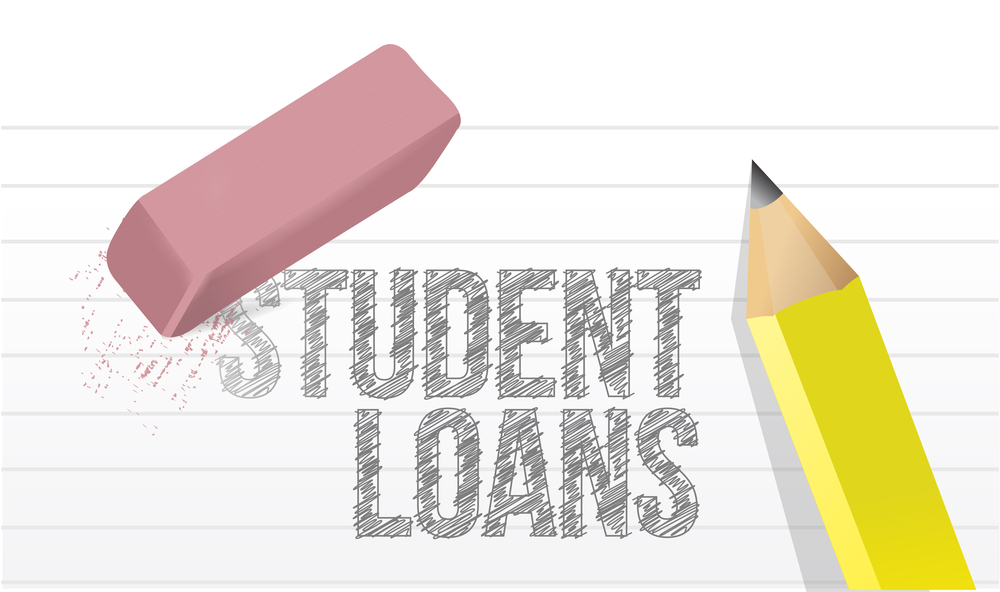A year after the Supreme Court struck down President Biden’s student loan forgiveness plan, he presented a new scheme to the Department of Education on Tuesday. While it is less aggressive than the prior plan, this proposal would cost hundreds of billions of taxpayer dollars, doing more harm than good.
As the legendary economist Milton Friedman noted, “One of the great mistakes is to judge policies and programs by their intentions rather than their results.”
Higher education in America is costly, and this “forgiveness” would make it worse.
Signing up for potentially life-long student loans at a young age is too normalized. At the same time, not enough borrowers can secure jobs that offer adequate financial support to pay off these massive loans upon graduation or leaving college. These issues demand serious attention. But “erasing” student loans, as well-intentioned as it may be, is not the panacea Americans have been led to believe.
Upon closer examination, the President’s forgiveness plan creates winners and losers, ultimately benefiting higher-income earners the most. In reality, this plan amounts to wealth redistribution. To quote another top economist, Thomas Sowell described this clearly: “There are no solutions, only trade-offs.”
Forgiving student loans is not the end of the road but the beginning of a trade-off for a rising federal fiscal crisis and soaring college tuition.
When the federal government uses taxpayer funds to give student loans, it charges an interest rate to account for the cost of the loan. To say that all borrowers no longer have to pay would mean taxpayers lose along with those who pay for it and those who have been paying or have paid off their student loans.
According to the Committee for a Responsible Federal Budget, student debt forgiveness could cost at least $360 billion.
Let’s consider that there will be 168 million tax returns filed this year. A simple calculation suggests that student loan forgiveness could add around $2,000 yearly in taxes per taxpayer, based on the CRFB’s central estimate.
Clearly, nothing is free, and the burden of student loan forgiveness will be shifted to taxpayers.
One notable feature of this plan is that forgiveness is unavailable to individuals earning over $125,000 annually. In practice, this means that six-figure earners could have their debts partially paid off by lower-income tax filers who might not have even pursued higher education. This skewed allocation of resources is a sharp departure from progressive policy.
Data show that half of Americans are already frustrated with “Bidenomics.”
Inflation remains high, affordable housing is a distant dream, and wages fail to keep up with soaring inflation. Introducing the potential of an additional $2,000 annual tax burden at least for those already struggling, mainly to subsidize high-income earners, adds insult to injury.
Furthermore, it’s vital to recognize that the burden of unpaid student loans should not fall on low-income earners or Americans who did not attend college. Incentives play a crucial role in influencing markets.

By removing the incentive for student loan borrowers to repay their debts, we may encourage more individuals to pursue higher education and accumulate debt without the intention of paying it back. After all, why would they when it can be written off through higher taxes for everyone?
The ripple effect of this plan could be far-reaching.
It may make college more accessible for some, opening the floodgates for students and the need for universities to expand and hire more staff, leading to even higher college tuition. This perverse incentive will set a precedent that will create a cycle of soaring tuition, which would counteract the original goal of making higher education more affordable.
While the intention behind President Biden’s student loan forgiveness may appear noble (in likelihood, it is a rent-seeking move), the results may prove detrimental to our nation’s economic stability and fairness. And if the debt is monetized, more inflation will result.
Forgiving student loans will exacerbate existing problems, with the brunt of the burden falling on lower-income Americans. Instead of improving the situation, it will likely create an intricate web of financial consequences, indirectly affecting the very people it aims to help. But that is the result of most government programs with good intentions.
Vance Ginn, Ph.D., is president of Ginn Economic Consulting, chief economist or senior fellow at multiple state thinks across the country, host of the Let People Prosper Show, and previously the associate director for economic policy of the White House’s Office of Management and Budget, 2019-20. Follow him on X.com @VanceGinn.


READER COMMENTS
Mark
Oct 20 2023 at 5:07pm
In my view, the most dangerous part of the Biden program is the ability to repay based upon your income, with a 10 or 20 year forgiveness of any balance. For students pursuing a relatively low earning profession, such as teaching or social work, their payment could be so low that there will be a balance forgiven whether the annual tuition is $50,000 $100,000 or $200,000. For these programs, the schools will have no incentive to keep tuition costs down. Instead, they will raise tuition, capture the windfall, and pass the excess cost onto the taxpayer.
Thomas L Hutcheson
Oct 21 2023 at 9:38am
I don’t so much disagree with this analysis as wonder why the same dollar for dollar amount of angst about a deficit-creating transfer of income is not visited on the Reagan/Bush/Trump-Ryan tax cuts?
TMC
Oct 21 2023 at 2:39pm
The tax cuts weren’t a transfer, and they didn’t add to the deficit as they didn’t reduce federal income. The problem you are trying to find is called ‘spending’.
Thomas L Hutcheson
Oct 23 2023 at 9:00am
I agree it was not the tax cuts themselves (what’s not to like about taxing business income less?), but the failure to make up for the revenue losses with higher taxes on personal income (or better still personal consumption). That was a common feature of the Reagan, GWB and Trump-Ryan tax cuts.
Robert S Hertz
Oct 21 2023 at 4:58pm
Many good comments here, but one whopper of an exaggeration, as follows:
A. assume that the ultimate cost of uncollected loan payments is $360 billion.
B. assume that this is the total cost to the government over a 10 year period
C. If that is the case, then the cost is not $2000 each and every year to the 168,000 taxpayers!
Brandon Berg
Oct 22 2023 at 11:53pm
The headline claim is not really correct: Poor people don’t pay federal income taxes in the US. They pay payroll taxes, but not enough to fund their expected future Social Security and Medicare benefits. Even those who make token income tax payments are not paying enough to cover the cost of the government services they consume, much less enough to subsidize other people.
Biden’s student loan bailout is a transfer from the rich to the middle class. I guess you could say this comes at a cost to the poor because it reduces the amount of money available for means-tested spending, but there’s no direct transfer from poor to rich.
However, one aspect of the bailout that really did benefit the rich was the 3 1/2 year payment pause. Because doctors, dentists, and lawyers have the largest loan balances, they got by far the largest benefit from the zero-interest forbearance. The CFRB estimates that if the pause had been extended to the end of 2024, the average recently-graduated MD would have received over $100k in benefits, and JDs $65k, just from the forbearance alone, compared to just $10k for BA/BS. Interest started accruing this month and not at the end of 2024, so the actual figures are likely about 25% lower, but still much larger than the headline $10k/20k of debt cancellation.
Also, people on both sides are exaggerating the burden of student loan debt. A large majority of undergraduates will have less than $4k/year in student loan debt payments, while the college wage premium is on the order of $30k/year. The real cost of college is not tuition, but the opportunity cost of 4 years out of the labor market, which can easily be well in excess of $150,000. There is no student loan debt crisis.
Erma Decalo
Oct 23 2023 at 11:57am
There definitely is a student debt crisis. The following article is one of many that support this and though is is also my personal experience, I have met many people who can relate.
https://www.cfr.org/backgrounder/us-student-loan-debt-trends-economic-impact
johnson85
Oct 23 2023 at 3:26pm
That cite doesn’t support your claim that there is a student loan crisis. We certainly have stupid and counter productive policies with respect to student loans and the funding of higher education. But at the end of the day, it’s a screw job of taxpayers, not a crisis. People that borrow money at worst get one to four years (or more) of extra consumption and then have to pay back a relatively small portion of their disposable income under an income based repayment plan, before taxpayers ultimately get screwed.
That’s not good when the federal government is already on an unsustainable fiscal path, but it’s not that big of a contributor in the grand scheme of things.
Comments are closed.